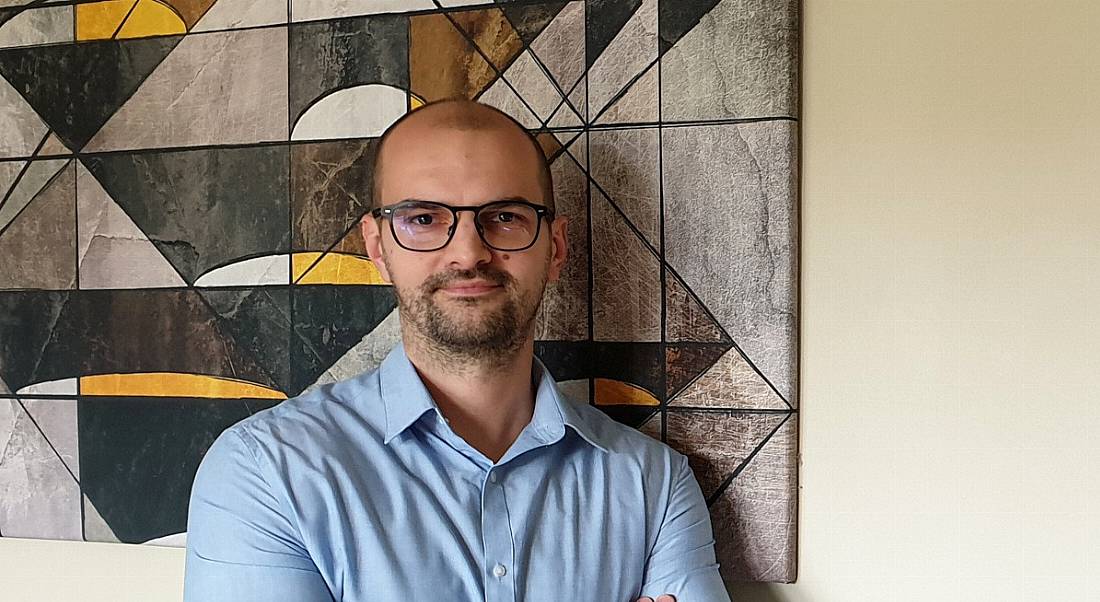Working in Kraków for Aon, Marcin Węgrzynek has built up experience across business intelligence-focused projects. Here, he shares what his role entails.
Having started out in Aon as a business analyst in 2017, Marcin Węgrzynek is currently manager of a business data analysis team in the company’s centre for innovation and analytics in Kraków.
Węgrzynek is part of a team that is building a data warehouse solution and acquiring new data sources to support global analytics products and services.
Here, we learn more about the job of a business analyst and how Węgrzynek’s experience with Aon led to his managerial role this year.
‘Acting as a bridge between the technical side and business side is very common in my role’
– MARCIN WĘGRZYNEK
If there is such a thing, can you describe a typical day in your job at Aon?
That’s the beauty of working in this area, there’s nothing typical in this job! Even if you spend a few years building a unified approach for a reporting solution, there is no guarantee that you’ll end up with a fully generic data model that allows you to integrate every data source, even if it’s derived from a substantially similar area.
In other words, typically, every day I deal with various challenges that arise from working with data. This can’t be done only with a computer. Understanding the processes behind datasets is just as important. How you gain knowledge about these processes is through a lot of communication with business users and stakeholders. Acting as a bridge between the technical side and business side is very common in my role.
What kind of projects do you work on?
My projects predominantly relate to enhancements of our data warehouse and data model. These are driven by acquiring new data sources that need integration within our solution. As a result, we get a ‘single source of truth’ for financial, and other client and colleague analytics. Once integrated and unified, this data can be used to feed specific services and products that allow our clients and colleagues to access key metrics unique to Aon, therefore giving them a significant competitive edge.
One of my current projects revolves around a suite of self-service tools and insights to provide in-depth analysis of working capital, credit control and fiduciary metrics that inform specific day-to-day decisions. The metrics analysis enables efficiencies for teams to support processes improving cash flow, reducing bad debt provisions, and impacting collection and invoicing processes.
What skills do you use on a daily basis?
Communication, analytical thinking, technical skills, project management and requirements gathering. These are probably the top skills that hiring managers will look for in a business analytics role. I can fully agree, they are fundamental. A combination of all these is the key to success.
What is the hardest part of your working day?
I think that switching between initiatives and priorities is probably the most time-consuming part of my job. It can be frustrating at times. Working with different data sources and various stakeholders can also be challenging. It’s natural that context-switching can impact your focus and that’s something I am always trying to improve.
Do you have any productivity tips that help you through the working day?
There are no stupid questions. Never be afraid to ask about something that you don’t fully understand. When you deal with a completely new area, in which you simply don’t have any experience, you might get lost. That’s OK. Always look for answers coming from experts. Most of them will be happy to share their knowledge with you.
In larger projects, track your progress and focus on key deliverables. This way you won’t end up in a never-ending loop of ‘small additional enhancements’. These can cause a lot of extra work and make reaching the deadline far more difficult than anticipated.
When you first started as a business analyst, what were you most surprised to learn was important in this role?
Asking the right people the right questions. As I already said, asking questions is crucial in my role. It allows me to learn and understand things that are often not that obvious. I like to find the answers myself, but the volume of new components I needed to learn was just too high to continue down that path. I had to reach out to colleagues with greater experience, and it has paid off.
How has this role changed as this sector has grown and evolved?
As global trends show, the need to analyse our data is constantly growing. You can see it every day, where almost all industries have to deal with migration to a new and better environment, data engine or visualisation tool. It’s starting to impact everyone, from data engineers and architects, through to data scientists, data analysts and the end users.
In my role, it means I must keep up with all those changes, since each product or project involves cooperation with various team members and having good working knowledge of the tools they use.
What do you enjoy most about leading a business analytics team?
Definitely the most enjoyable part is knowing that this job has a meaning. That after all the work the whole team does, it’s serving a distinct purpose. It doesn’t matter if we enable new capabilities, help to cut costs or improve business processes. The outcome is never the same, but it’s always noticeable and important.
The second thing I enjoy is that I get to work with different people in different positions and roles. Being often in the centre of what’s going on in the project allows me to see the big picture. Not just in terms of my project scope, but also getting a glimpse into the firm’s broader objectives.




